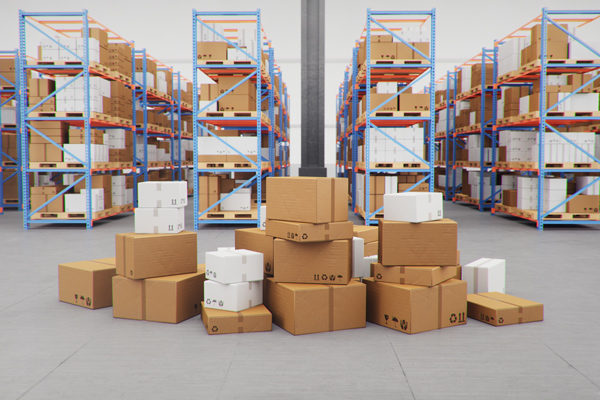Overview
- Many companies rely on spreadsheets to track and record warehouse inventory movements.
- Spreadsheets are a manual process with negative downstream effects on budget, quality control and more.
- Today’s challenges require modernizing manual inventory tracking with digital automation like mobile barcoding technology.

Using spreadsheets to track and manage warehouse inventory is a common practice. It eliminates the inaccuracies of tracking inventory receipt and transfer on paper, and even gives you the option to analyze your data graphically.
While using spreadsheets may seem like a step toward digitized inventory tracking, it’s still manual data collection—you have to manually type each transaction into your computer workstation in order to update your ERP. And because it’s a manual process, using spreadsheets is still subject to human error and a host of inefficiencies.
You may be unaware just how much this practice is costing you. Let’s look more closely at five of the most common negative impacts of using spreadsheets to track your inventory.
1. Ineffective Budget Utilization
Because a spreadsheet is static, it can only give you a snapshot of what was, not what is. And since you never have a complete picture into your actual inventory levels, human error and inaccurate data can cause miscommunication throughout your warehouse. This results in avoidable mistakes.
Each delay in receiving, put away and shipping increases your chances of missing important deadlines, leading to budget overruns and increased overhead costs. Your only strategy at controlling these budget concerns is to increase labor, which in turn drives up overhead costs further. Ultimately, this is not a sustainable long-term solution.
Mobile barcoding, on the other hand, can help you leverage real-time stock levels to optimize budget utilization and spends.
WATCH THIS VIDEO: Life Extension’s inventory transformation success story:
2. Inefficient Quality Control

Typing into a static spreadsheet means there’s an additional manual step in your workflow with your ERP. And without the ability to transact against your ERP in real-time, your workforce isn’t able to verify customer orders. This may lead to picking and packing errors. Resulting charge backs and returns hurt your bottom line and negatively affect your customer relationships. You may even lose business to someone who can meet their requirements without as many errors.
With today’s Amazon effect, B2B and B2C customers alike expect complete visibility, accuracy, and speed of their deliveries. Spreadsheets simply can’t provide you with that level of oversight. But by automating data collection with mobile barcoding solutions, you can achieve perfect or near-perfect accuracy of 99.99% or higher with live transparency.
READ MORE: 7 Cost Leaks of Outdated Manual Processes »
3. High Worker Turnover
In addition to harming customer relationships, missed deadlines and inefficient processes damage your credibility with your team. The extra steps they have to perform because of manual inventory recording processes leads to increased overtime and an overworked workforce. The lack of investment in optimizing their workflows makes them feel undervalued and unfulfilled, leading to high turnover.
Modern warehouses already have skilled labor shortages, a problem only exacerbated by the recent COVID-19 pandemic. These impacts are set to continue into the foreseeable future. A workforce without automation will not find success moving forward.
See Also: Turning Labor Challenges into Labor Opportunities in the Warehouse »
4. Lost Contracts and Legal Impacts from Non-compliance
Some industries, such as aerospace and defense and food and beverage, require exacting inventory traceability throughout their supply chain. Government contractors must be able to quickly supply accurate inventory movements and transactions in the event of an audit or recall, something nearly impossible to achieve with a spreadsheet. Failure to do so results in costly penalties and severed contracts. This lack of traceability also prevents contractors from scaling operations to win bigger contracts.
Food and beverage manufacturers must also be able to quickly trace ingredients from farm to fork. A spreadsheet can’t provide immediate access to the minute level of detail needed for such traceability. In the event of a recall, this means companies must destroy good product with the bad because they can’t accurately track the affected ingredients at a granular level.
5. Lack of Mobility

With spreadsheets, workers can’t transact inventory data against your ERP in real-time. They also must go to a computer cart or central workstation to manually key in inventory data. This leads to a delay in when transactions take place and when they are recorded in your ERP, so workers and managers can’t trust that what they see on a printout is actually correct.
Contrast this process with real-time mobile inventory control. Your workers can scan barcodes from enterprise mobile devices to collect data and transact against your ERP from their point-of-work. Since your ERP is always up-to-date, you can trust that your inventory levels are always correct. No more delays in reporting or misunderstandings about inventory levels or movements.
A lack of mobility also puts your workers at greater risk for spreading COVID-19. Social distancing is incompatible with entering shared spaces, transferring paper printouts and typing on shared keyboards. Enterprise mobility all but eliminates these challenges, reducing the chance for an operational shutdown.
Read More: How Mobility Protects Your Workforce During COVID-19 »
Eliminate Hidden Inventory Costs with Mobile Barcoding
Mobile barcoding technology provides much more than simple barcode automation. It includes software that seamlessly extends your ERP and integrates with other business systems and technologies like RFID, PLCs, and IoT and IIoT devices, offline mobility and more.
Replacing paper and computer spreadsheets with mobile barcoding technology puts real-time ERP inventory data into the hands of your workers. This eliminates costly delays in reporting, enabling you to trust your inventory levels, ship orders accurately and on-time, and boost customer service.
By recording material movements as it moves throughout your warehouse, you’ll also gain the complete visibility and traceability needed for contractual and regulatory compliance. Mobile barcoding also optimizes workflows for your workforce, leading to greater job satisfaction and higher worker retention. And since workers no longer have to use paper printouts or share computer workstations, they can uphold sustainable social distancing and minimize virus transfer risk.
With today’s global challenges, continuing to rely on inefficient, unscalable processes for tracking warehouse inventory manually is no longer a path forward. Recording inventory transactions with Excel spreadsheets is no exception.
Truly transforming your operation with mobile barcoding technology is one way companies can leave manual processes behind to set themselves onto the path of a more profitable future.






